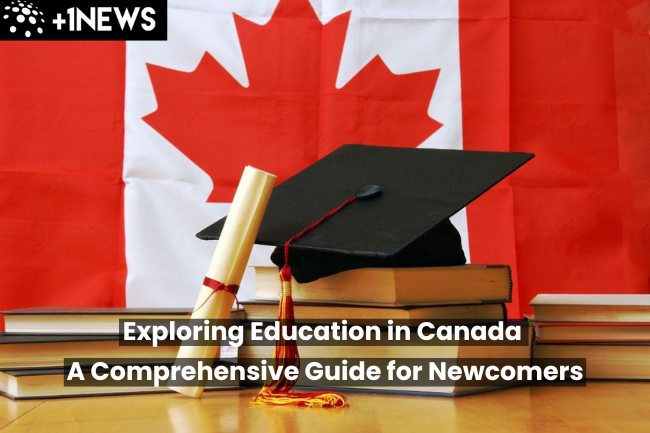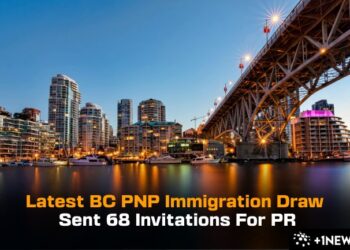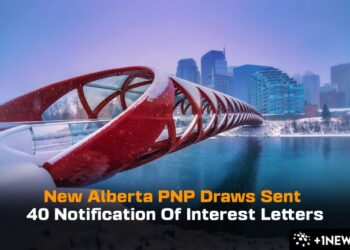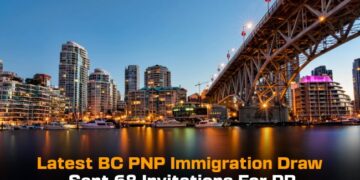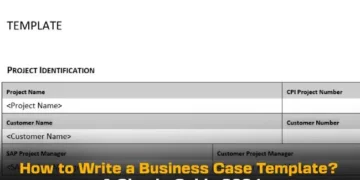Are you planning to start your education journey in Canada? This guide is here to help you understand everything you need to know about the Canadian education system.
From the early years of school to high school, we’ll cover important topics like how to choose a school, enrollment processes, grading systems, and the differences between public and private schools.
Let’s dive into the details and get ready for a successful education in Canada!
Jump to:
Getting an Education in Canada: Is it Free for Newcomers?
Yes, newcomers can get a free education in Canada for their children. This includes permanent residents, work permit holders, and study permit holders.
Permanent residents don’t need extra documents – their children can go to public school for free education in Canada.
Temporary residents might need to give some documents to the school board to prove their child can get free education in Canada.
Public or Private Schools: What Are Your Choices?
Canada offers both public and private education options, granting families the freedom to select the best fit based on financial resources and preferences.
- Public schools, funded through provincial taxes, provide free education from kindergarten through high school. The curriculum is determined by each province, ensuring a consistent standard across the region.
- On the other hand, private schools operate independently and charge annual tuition fees. These institutions have the flexibility to design their curriculum beyond provincial guidelines.
Paying for Education in Canada: Who Pays?
- Public school is free for most kids. But private school can cost money.
- Private day schools can cost from $15,000 to $30,000 every year.
- Private boarding schools can cost from $63,000 to $83,000 every year.
Trying a Different Way: Homeschooling
Some parents choose to teach their kids at home – it’s called homeschooling.
- Homeschooling rules and regulations vary by province or territory.
- Suggested curricula and resources are available online; less than 1% of Canadian children are homeschooled.
Schools in Different Provinces: What’s the Difference?
The question of which province has the “best” education system will, therefore, depend on the needs and preferences of a family. Each province or territory sets its own curriculum for its public school system.
For example, although French is a requirement in the curriculum of Ontario for some grades, in Alberta, it is only a recommendation. Quebec requires French language instruction because of the major use of the language.
Researching online the curricula that are used in different provinces can help one decide where to settle.
Read More: Applying for Canada SDS Study Visa with New English Tests
Enrolling Your Child: How Does It Work?
The enrollment process varies based on the school level and location. Parents typically need to provide four documents:
- Birth certificate
- Proof of guardianship or custody
- Proof of residency
- Record of immunizations
Local school boards manage numerous schools, offering multiple choices within a community.
When Does School Happen?
Canadian schools operate from September to June, with summer break between late June and early September. Elementary and high schools usually start between 8 and 9 a.m. and conclude between 3 and 4 p.m.
Universities and colleges offer more flexible schedules, including evening and night classes.
Learning Languages in Canada
In Canada, kids can learn in English or French. Some places need you to learn in French, Quebec.
Schools also teach English or French as a second language to help kids who are new to Canada.
How Are Students Graded?
Canada follows a common structure with slight variations across provinces/territories. It includes letter grades, corresponding percentages, and descriptors:
| Letter Grade | Percentage | Descriptor |
|---|---|---|
| A | 80 to 100 | Excellent |
| B | 70 to 79 | Good |
| C | 60 to 69 | Average/Fair |
| D | 50 to 59 | Poor |
| F | 49 and Under | Fail |
Special Education: Inclusion and Support
Canada focuses on inclusive education. Schools offer the following options for students with disabilities/special needs:
- Immersion in Standard Classes with Individual Education Plan (IEP): For students with mild physical or less severe intellectual disabilities, schools immerse them into standard classes with an IEP.
- Specialized Classroom Settings: Students with more advanced special needs can be grouped in specialized classes. These classes offer unique educational experiences with tailored content and pacing.
Joining School Activities and Events
Canadian schools organize various events and activities for students:
- Field Trips: Schools often organize field trips to locations like museums and historical sites, enriching learning experiences outside the classroom.
- Extracurricular Activities: Students can join clubs and sports teams, fostering interaction and skill development beyond school hours.
- Annual Events: Schools commemorate events like the Terry Fox Run and Remembrance Day, teaching students about Canada‘s history.
Parental Involvement in Education
Parents can get involved through:
- Parent-Teacher Associations (PTAs): PTAs involve parents in fundraising, event planning, and volunteering for school activities.
- Parent-Teacher Conferences: Attending conferences helps parents understand their child’s progress and areas needing support.
- School Board Meetings: Parents can participate in meetings to influence curriculum decisions and school policies.
Settlement Workers in Schools (SWIS) Program
The SWIS program by IRCC assists newcomer students and families. SWIS workers in schools offer settlement services, help families transition to Canada, and connect them to resources in the community.
Please contact your school or the SWIS office directly (after enrolling your child at a school) to find out more about SWIS services available in your area.
Getting Ready for a Great Education in Canada
Starting your education in Canada is an exciting journey. Remember, newcomers get free education in Canada, There are different kinds of schools, and each province has its own way of teaching.
You can enroll your child by talking to the school board, and schools have different activities and events to make learning fun. With this guide, you’re all set to make the most of your educational adventure in Canada!


